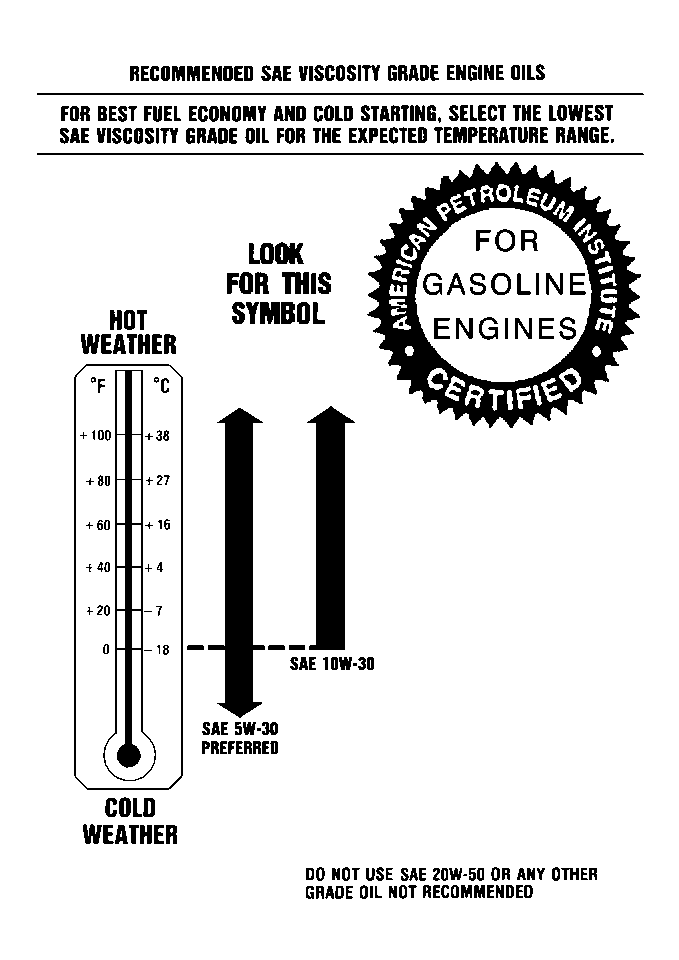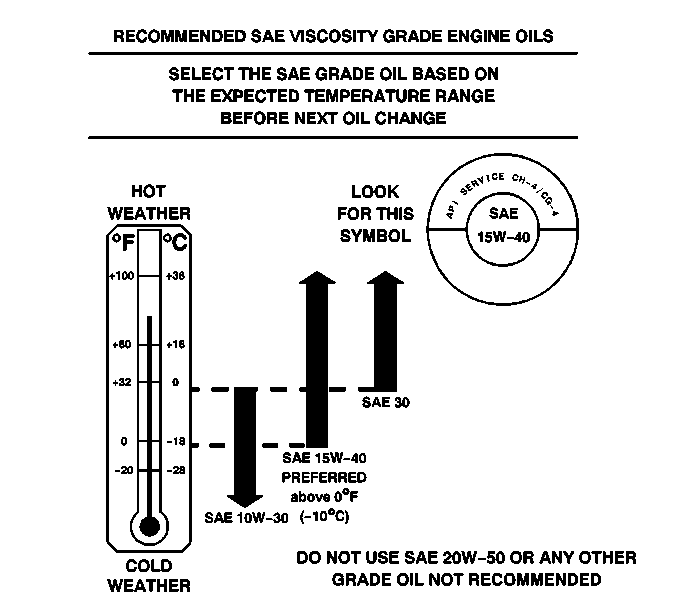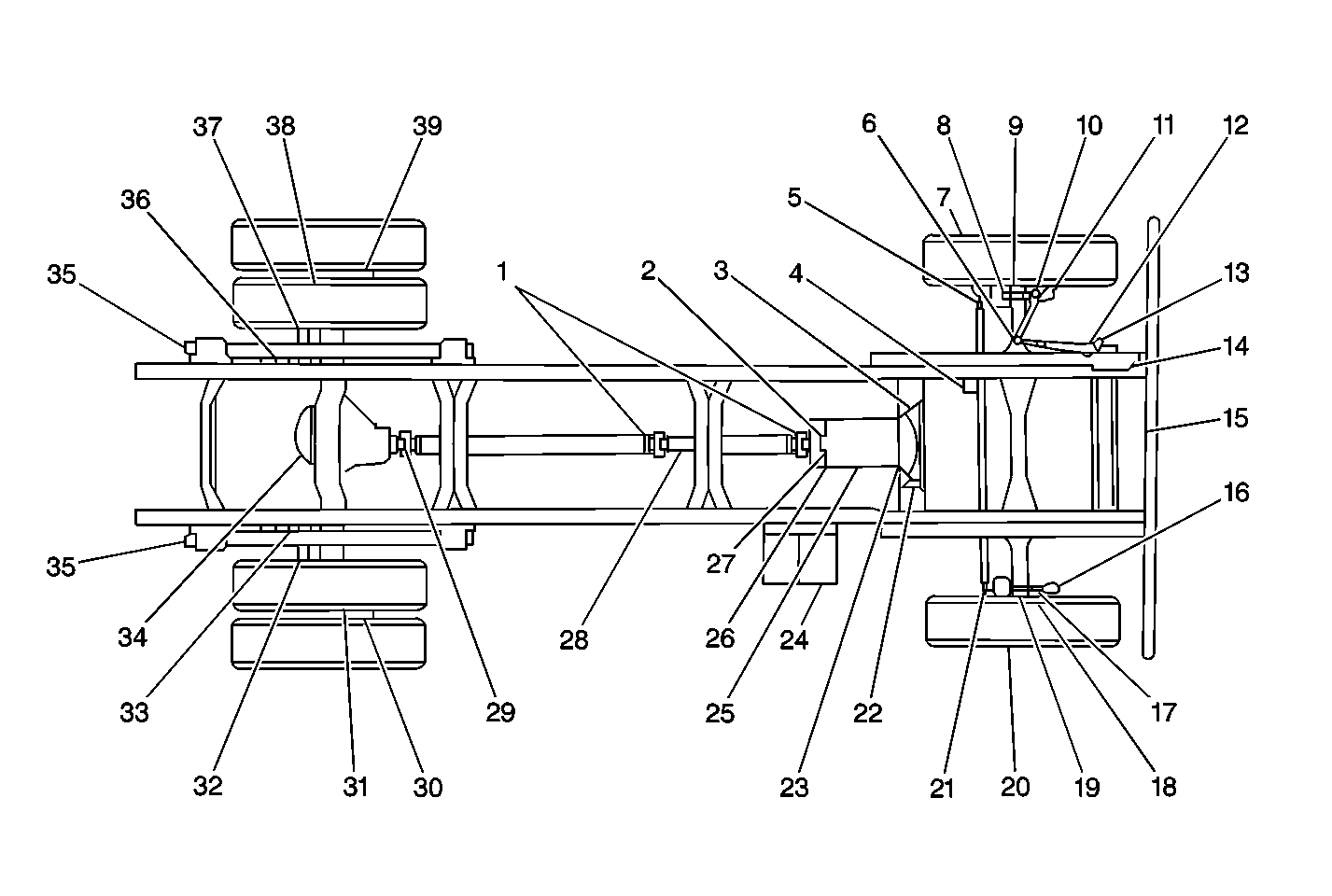For time and/or mileage intervals of scheduled maintenance items, refer to
Maintenance Schedule
.
The following text and illustrations describe the details of the required scheduled
maintenance services.
For information on the proper fluids and lubricants to use, refer to
Fluid and Lubricant Recommendations
.
Engine Oil and Filter Change
For the engine oil and filter changing procedure, refer to
Engine Oil and Oil Filter Replacement
in Engine Mechanical.
For information on the correct engine oil quality and viscosity, refer to
Fluid and Lubricant Recommendations
the following:
Gas Engine Oil Quality
Oils of the proper quality for the vehicle can be identified by looking for
the STARBURST symbol. The STARBURST symbol indicates that the oil has been certified
by the American Petroleum Institute (API), and is preferred for use in gasoline
engines.

Engine Oil Viscosity
The recommended oil viscosity is SAE 5W-30.
Engine oil viscosity, or thickness, has an effect on the fuel economy and on
the cold-weather operation, such as starting and oil flow. Lower viscosity engine
oils can provide better fuel economy and cold-weather performance. However, higher
temperature weather conditions require higher viscosity engine oils for satisfactory
lubrication. When the temperature is consistently above -18°C (0°F),
use SAE 10W-30. SAE 20W-50 or oils of other viscosity rating or quality designations
are NOT recommended for use in any trucks at any time.
Diesel Engine Oil Quality

Important: Oils that do not have one of these designations
CH-4 or CG-4, can cause engine damage which is not covered by the warranty.
This doughnut-shaped logo symbol is used on most oil containers to help you
select the correct oil. It means that the oil has been certified by the American
Petroleum Institute.
You should look for this on the oil container, and use only those oils that
display the logo.
Oils designated as API CH-4 or CG-4 are best. The CH-4 or CG-4 designations
may appear either alone, together or in combination with other API designations,
such as API CH-4/SJ, CG-4/SH or CH-4/CG-4/SJ.
These letters show American Petroleum Institute (API) levels of quality.
Diesel Engine Oil Viscosity

The recommended oil viscosity is SAE 15W-40.
Notice: Using oils of any viscosity other than those recommended
could result in engine damage. When choosing an oil, consider the range of
temperatures the vehicle will be operated in before the next oil change.
Then, select the recommended oil viscosity.
Important: However, you can use SAE 10W-30 if temperatures
stay above -18°C (0°F) before your next oil change. When it is very
cold, below -18°C (0°F), you should use SAE 5W-30 to improve cold starting
and prevent engine damage.
These numbers on the oil container show its
viscosity, or thickness. Do not use other viscosity oils such as SAE 10W-40 or SAE
20W-50.
Chassis Lubrication
Refer to the illustration for the location of the lubrication points for the
chassis. Lubricate the transmission shift linkage. Lubricate the park brake guides,
the underbody contact points and the linkage.
Single Axle Models





